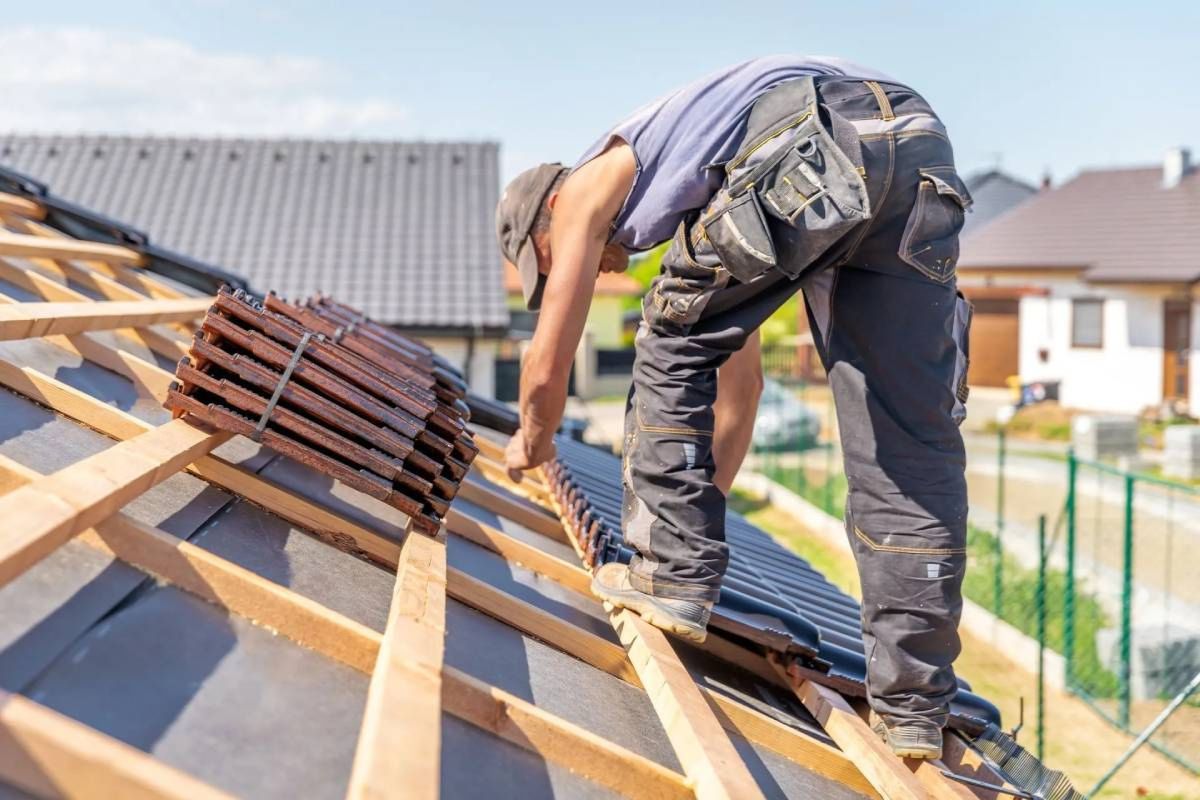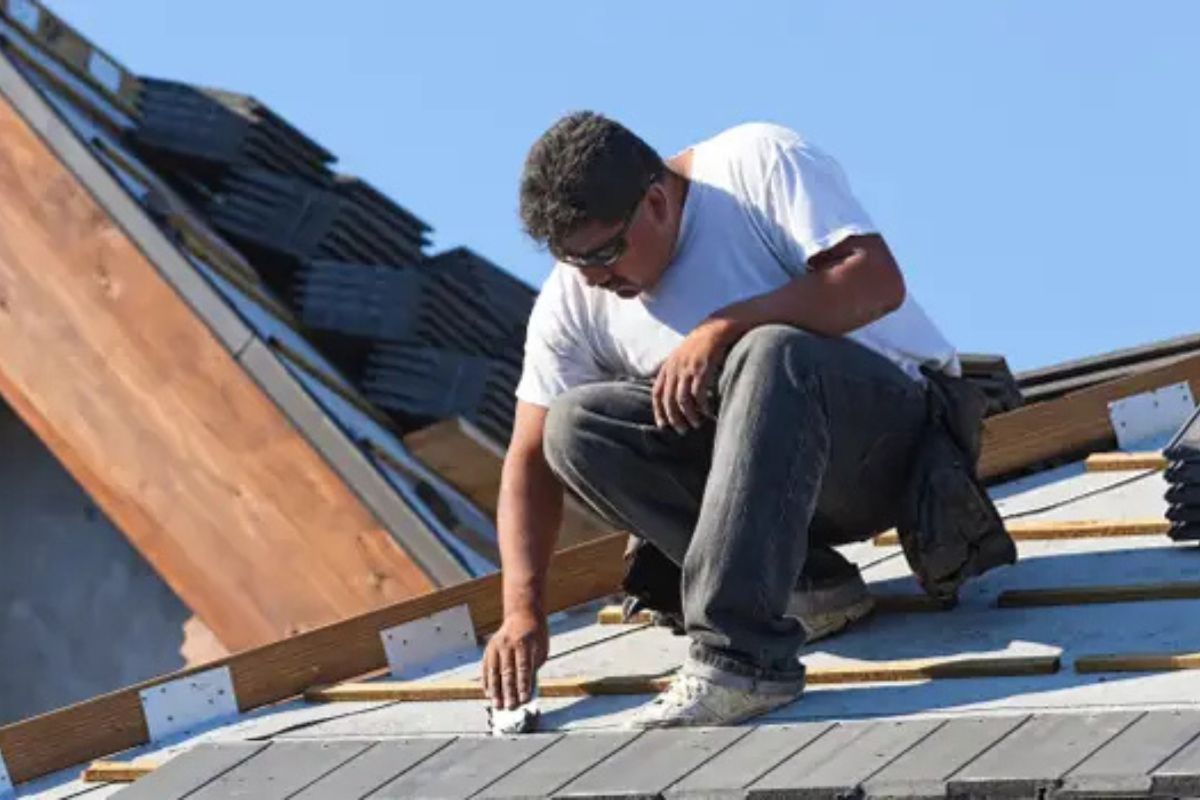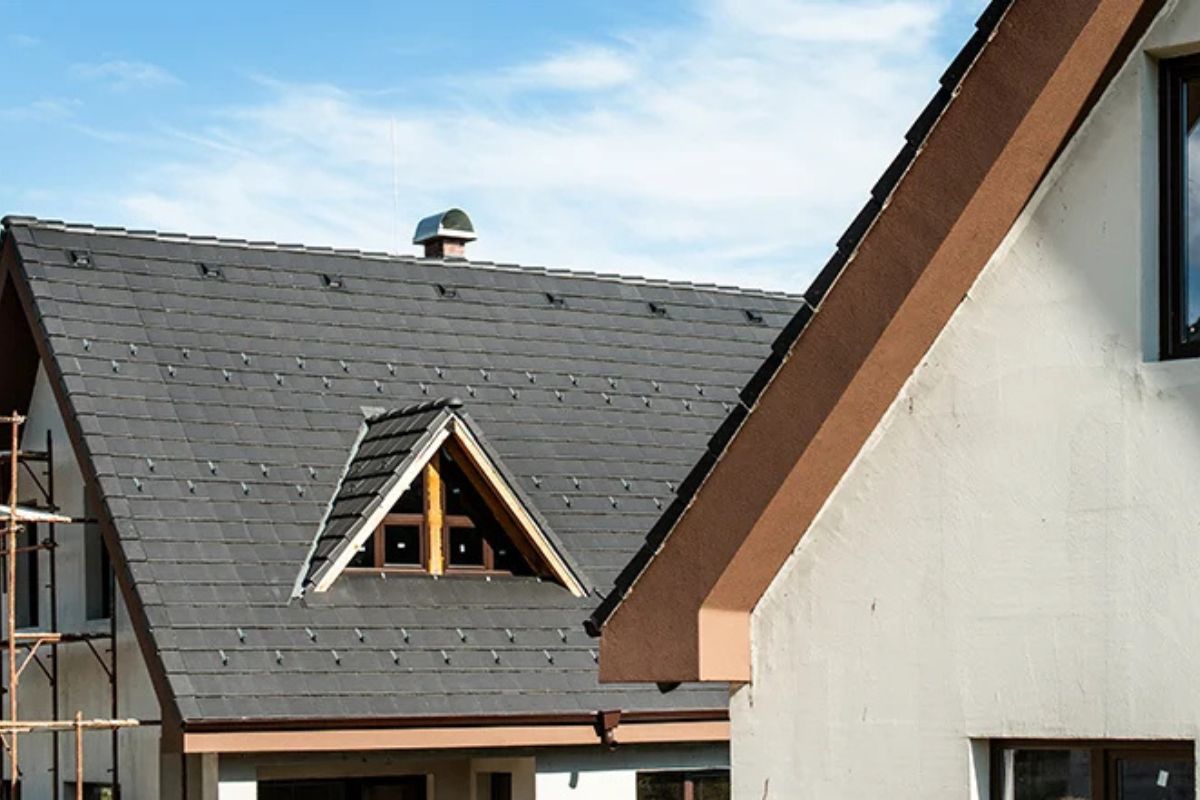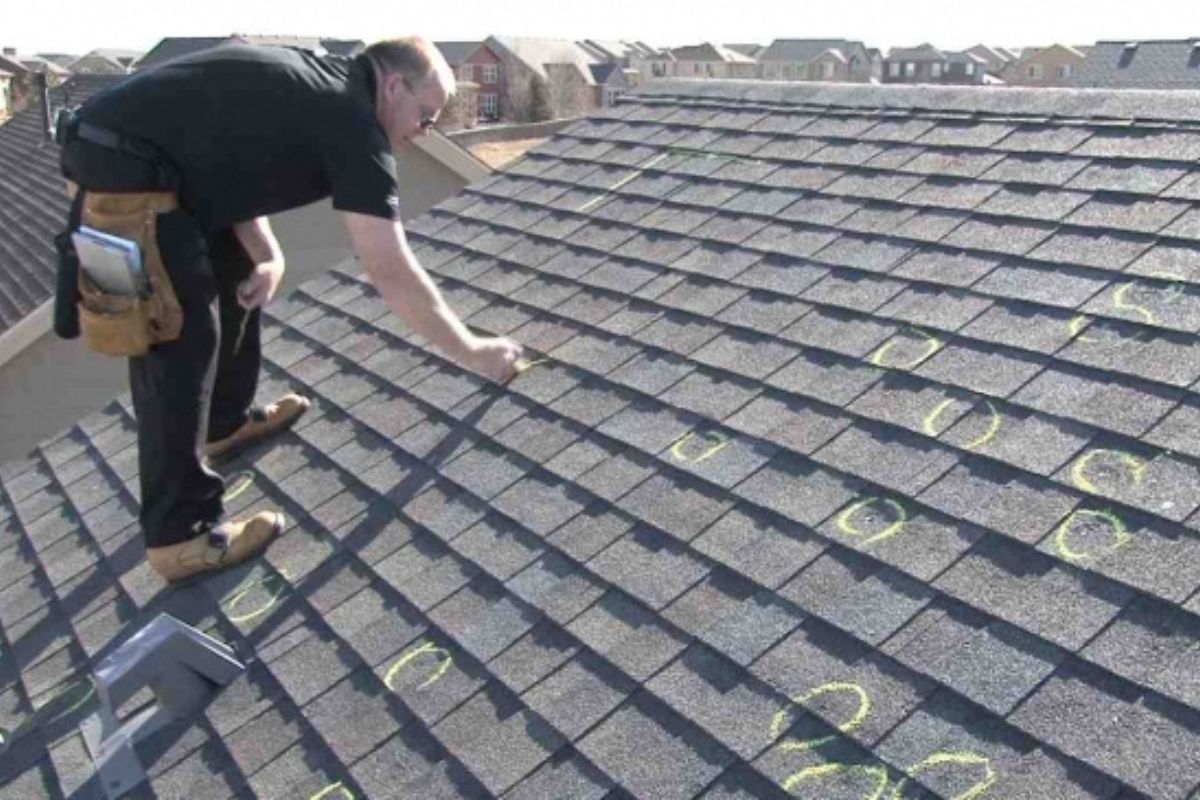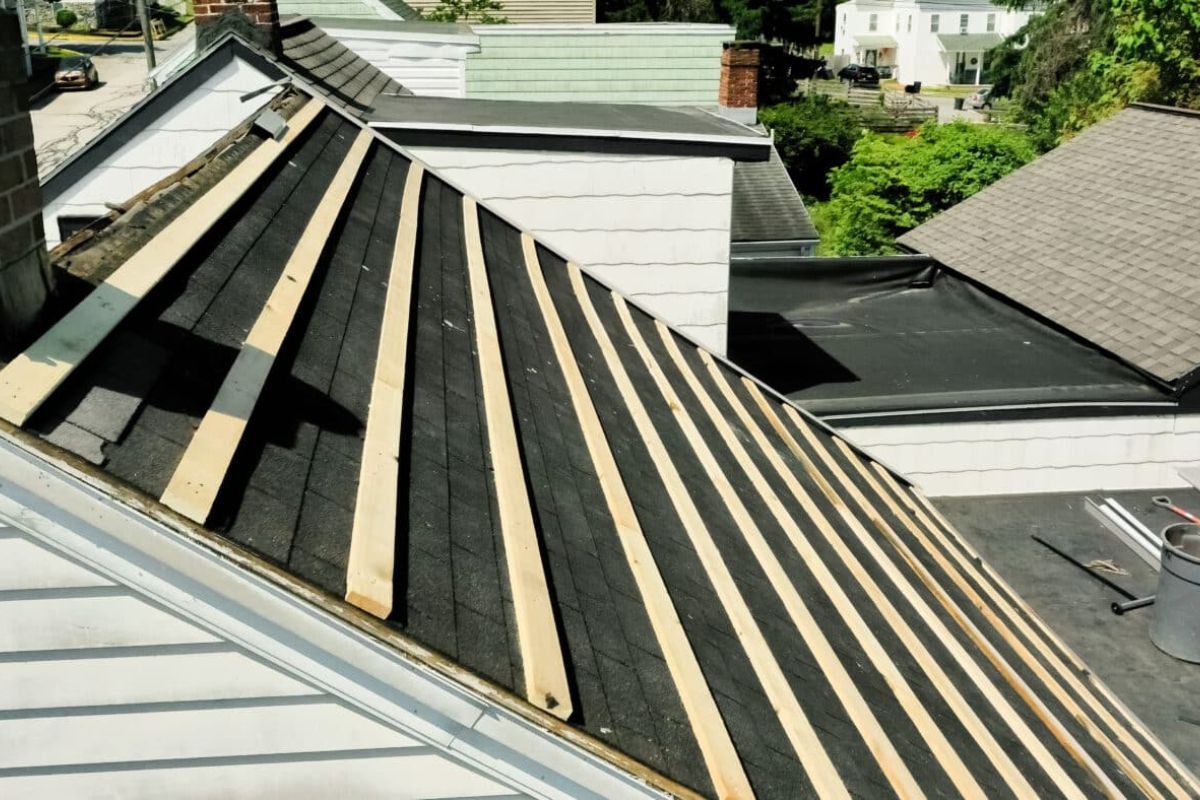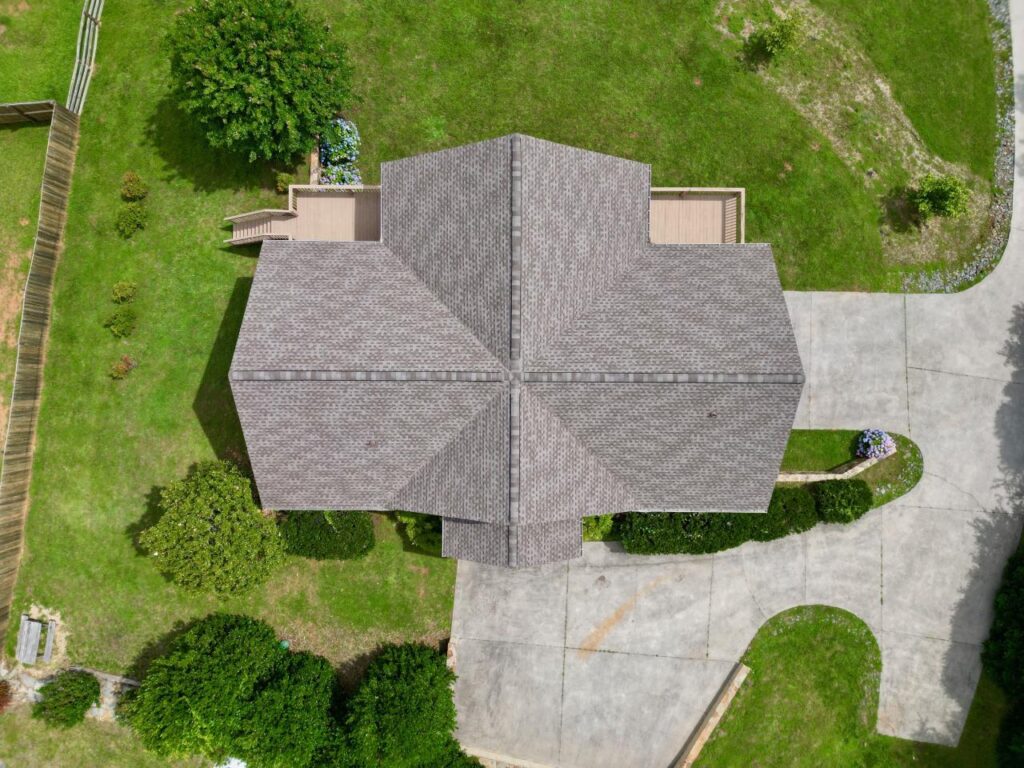To check for roof damage after a storm safely from ground level. Start by using binoculars to inspect your roof, check gutters for granules, and examine your home’s interior for water stains or leaks.
Storm damage costs homeowners an average of $12,404 in repairs. Catching damage early saves thousands in repair costs. This guide shows you safe inspection methods, damage warning signs, and proper insurance procedures.
How Do You Start Checking for Storm Damage Safely?
Start storm damage inspection from the ground using binoculars. Never climb onto your roof immediately after a storm. Water damage and structural issues make roofs unstable and dangerous.
Professional roofers recommend ground-level inspection first. Walk around your home’s perimeter and look for obvious damage signs before considering any ladder use. Use binoculars for roof examination, a flashlight for attic inspection, and a camera for damage documentation. Only use a ladder if you have experience and conditions are completely safe.
What Are the Most Common Signs of Roof Storm Damage?
The first sign of storm damage appears in your gutters and downspouts. Hail strong enough to dent gutters typically damages roofing materials too.
Examine your gutters for dents and granules collected inside. Look for missing or loose shingles on your roof surface. Check for cracked or curled shingle edges that break the water-tight seal. Bent gutter sections indicate significant impact damage.
Check your property for collateral damage. Examine air conditioning units, deck railings, patio furniture, cars, and siding for hail marks. Property damage usually indicates roof damage occurred during the same storm event.
How Do You Identify Hail Damage on Your Roof?
Hail damage appears as random impact marks with no pattern. Different roofing materials show different hail damage signs.
Asphalt shingle hail damage shows as black-colored impact marks and granule loss exposing roof felt. You’ll notice soft spots that feel like bruised fruit and shiny areas where asphalt shows through. Wood shingle hail damage creates brown or orange-colored splits with sharp corners and edges on cracks. Impact marks appear along split areas with little deterioration at crack edges.
Hailstones measuring 1 inch or larger typically cause roof damage. The National Weather Service reports that 2-inch hail produces significant structural damage requiring new replacement roofing.
What Wind Damage Signs Should You Look For?
Wind damage from speeds exceeding 50 mph appears as lifted, missing, or torn shingles. Hurricane-force winds of 74 mph or greater cause visible roof damage.
Common wind damage patterns include lifted shingles breaking water-tight seals and missing shingles exposing underlayment. Torn shingles show jagged edges and exposed black underlayment paper becomes visible. Wind-driven rain causes secondary damage. Even minor shingle lifting allows water penetration, creating interior leaks and structural problems.
How Do You Check for Interior Storm Damage?
Interior storm damage appears as water stains on ceilings and walls. Check your attic and living spaces for moisture signs immediately after storms.
Look for brown or yellow ceiling stains and water marks on walls near rooflines. Wet or soggy attic insulation indicates roof penetration. Musty odors suggest water damage and visible daylight through roof boards shows structural compromise.
Use a flashlight to inspect your attic thoroughly. Look for water spots on wooden beams, damp insulation, and sagging roof areas. These signs often appear before visible interior damage in living spaces.
What Types of Debris Damage Should You Watch For?
Large tree limbs on your roof indicate definite storm damage. Debris damage usually causes more severe problems than wind or hail alone.
Tree branches can puncture roof surfaces and create immediate water entry points. Scattered storm debris blocks drainage systems and causes water backup. Holes or punctures in roofing materials require immediate attention. Damaged flashing around chimneys and vents allows water infiltration.
Clear debris immediately to prevent additional damage. Standing water from blocked drainage creates serious structural problems that may require commercial roofing solutions for larger buildings.
When Should You Call a Professional Roofer?
Call a professional immediately if you notice sagging roof sections. Structural damage requires expert evaluation and emergency repairs.
Emergency professional help becomes necessary for sagging or drooping roof areas and large holes or punctures. Active water leaks inside your home indicate immediate problems. Cracked or broken roof supports pose safety hazards. Missing large sections of roofing expose your home to weather damage.
Professional inspectors safely access all roof areas. They spot damage homeowners typically miss and provide insurance documentation. Many roofing contractors offer emergency services for storm damage situations.
What Should You Do After Finding Storm Damage?
Document all damage with photographs before making repairs. Insurance companies require visual proof of storm-related damage for claims processing.
Take photographs of all visible exterior damage and document interior water damage and stains. Photograph damaged gutters and siding for complete documentation. Record any temporary repairs you make and keep receipts for emergency repair materials.
Contact your insurance company within 24 hours of finding damage. Most policies require prompt notification for storm damage claims. This timeline helps establish the connection between the storm event and your property damage.
How Much Does Storm Damage Repair Cost?
Storm damage repair costs average $1,100 for minor repairs. Extensive damage requiring full replacement costs $15,000 to $30,000.
| Repair Type | Cost Range |
| Minor shingle replacement | $200-$500 |
| Moderate hail damage | $1,000-$5,000 |
| Extensive wind damage | $5,000-$15,000 |
| Complete roof replacement | $15,000-$30,000 |
Repair costs depend on damage extent, roof size, and materials. Metal and tile roofs cost more to repair than asphalt shingles. Geographic location affects labor costs and material availability. Emergency repairs during storm season typically cost 20-30% more than regular maintenance work.
What Does Homeowners Insurance Cover for Storm Damage?
Standard homeowners insurance covers storm-related roof damage. Most policies include hail damage, wind damage, and fallen tree damage.
Insurance typically covers direct hail impact damage and wind damage from high-speed storms. Fallen tree damage to roof structures receives coverage along with water damage from storm-related leaks. Insurance excludes wear and tear, maintenance issues, and preventable damage. Regular roof maintenance helps maintain coverage eligibility and supports claim approval.
How Do You Prevent Future Storm Damage?
Regular roof maintenance prevents most storm damage. Annual inspections catch problems before storms cause major damage.
Schedule yearly professional inspections to identify weak points. Clean gutters and downspouts regularly to maintain proper drainage. Trim tree branches away from your roof to prevent debris damage. Replace damaged or missing shingles promptly to maintain roof integrity.
Impact-resistant shingles reduce hail damage by 30%. Metal roofing provides excellent wind resistance up to 140 mph. Consider upgrading to home roofing choices that offer better storm protection during your next replacement project.
What Mistakes Should You Avoid After Storm Damage?
File insurance claims within 6 to 24 months of storm events. Waiting too long eliminates coverage eligibility.
Avoid ignoring small damage that worsens over time and creates larger problems. Never hire unlicensed contractors offering immediate repairs without proper credentials. Don’t make major repairs before insurance inspection completes. Avoid paying contractors upfront before work completion and reject door-to-door sales offers that pressure immediate decisions.
Licensed contractors carry proper insurance and provide warranties. Verify contractor credentials before signing repair agreements. Check references and financing options before committing to major repair projects.
Final Thoughts
Check for roof damage after storms using safe ground-level inspection methods. Look for gutters filled with granules, missing shingles, and interior water stains as primary damage indicators.
Act quickly to prevent small problems from becoming expensive repairs. Document all damage with photographs, contact your insurance company promptly, and hire licensed professionals for major repairs.
Contact Ridgeline Roofing for professional storm damage inspection and repair services. Our experienced team helps homeowners navigate insurance claims and restore roof protection efficiently.
Professional inspection catches hidden damage that homeowners miss. Protect your home and family by scheduling expert evaluation after any significant storm event. Visit our residential roofing gallery to see examples of quality storm damage repairs.


